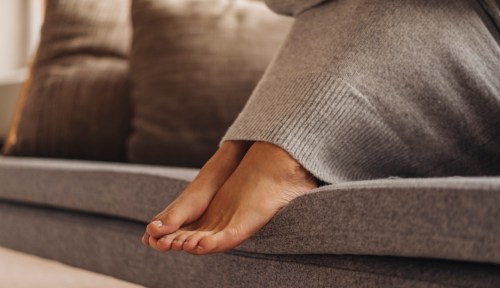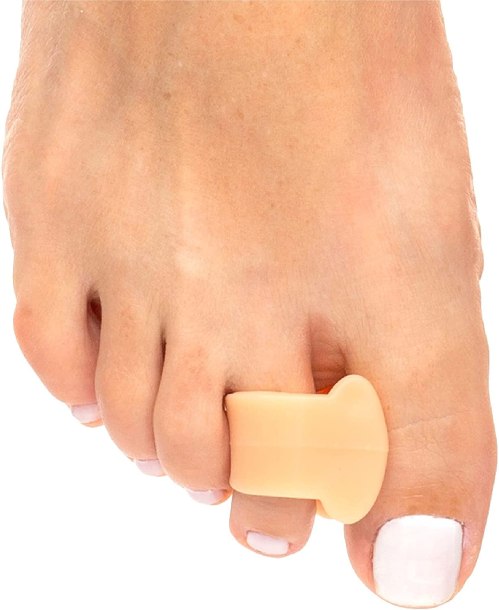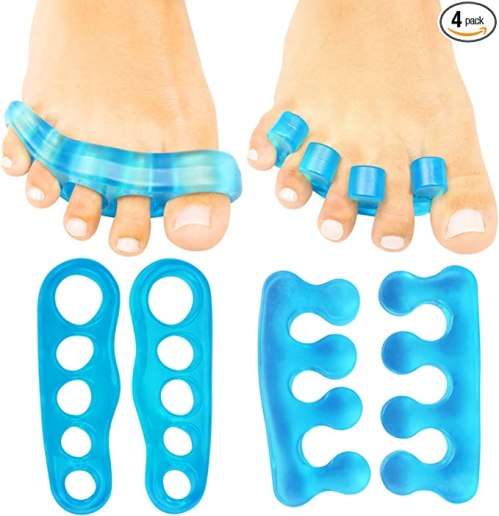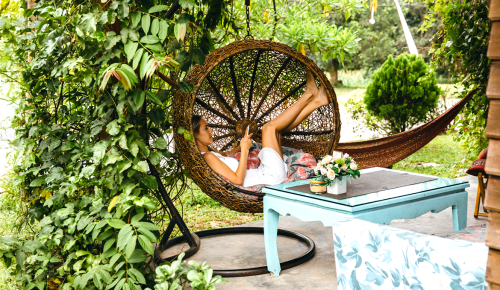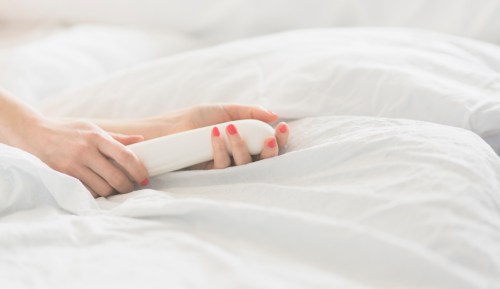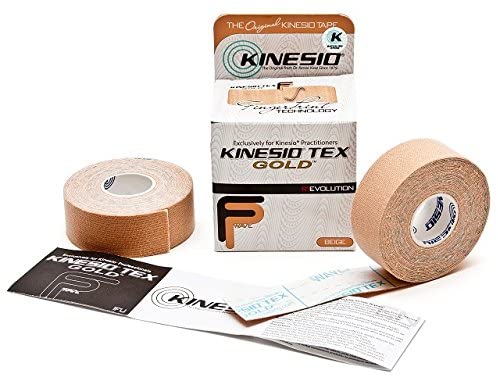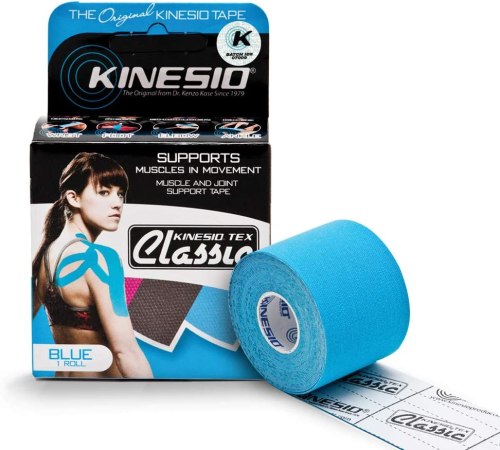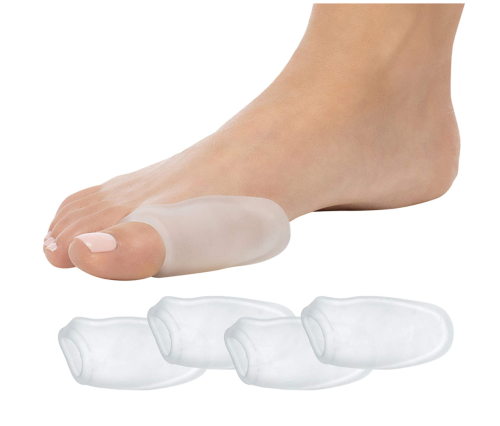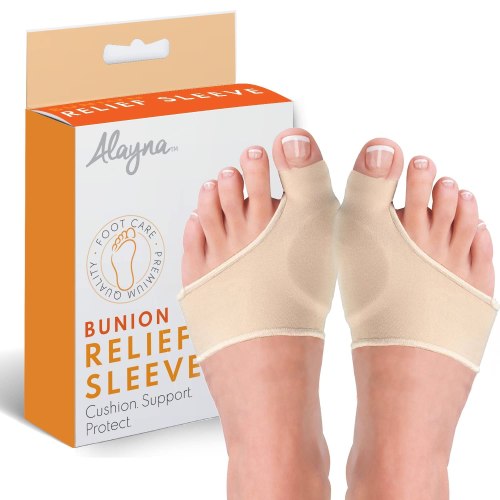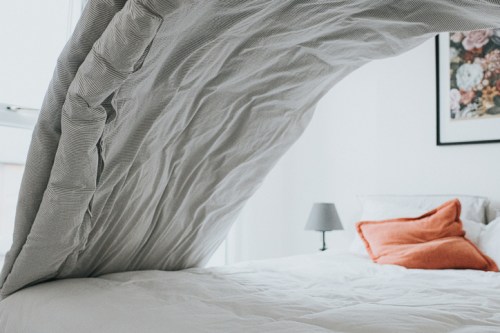Our editors independently select these products. Making a purchase through our links may earn Well+Good a commission
There are many causes of foot pain, but having a bunion may be one of the most agonizing (it is for me, at least). I was recently reminded of this fact when I wore a pair of sneakers that were way too narrow and kept rubbing the side of my foot. Needless to say, that put a lot of pressure on my bunion and caused me to steer clear of heels for the next few days. I also couldn’t help wondering if there was an easy way to prevent bunion pain without having to do anything drastic.
Experts in This Article
podiatrist and CEO of Arcus Orthotics
board-certified foot surgeon at Sole Podiatry NYC and star of TLC’s My Feet Are Killing Me
board-certified podiatrist at Advanced Podiatry
podiatrist and member of the Vionic Innovation Lab
board-certified podiatrist and founder of Step Up Footcare in New York City
board-certified podiatrist and CEO of Northern Illinois Foot &
board-certified podiatrist, foot surgeon, and founder of Fix Your Feet
The short answer is yes: Bunion correctors exist for the sole purpose of helping support the bone and relieve pressure and pain. But do they really work, and more importantly, should your wear one?
We spoke to podiatrists to find out, and learn their top picks for bunion correctors.
Best bunion correctors, at a glance:
- Best podiatrist-recommended toe separators: NatraCure, Gel Toe Separators, 12-Pack, $15
- Best wearable toe separators: ZenToes, Gel Toe Separators, $13
- Best set of toe separators: ViveSOLE, Toe Stretchers, 4-Pack, $12
- Best bunion splint: Caretras, Bunion Corrector, $25
- Best kinesiology tape for everyday wear: Kinesio, Kinesiology Tape Tex Gold, $13
- Best kinesiology tape for bunion compression: Kinesio, Therapeutic Athletic Tape Tex Classic, $11
- Best bunion guard: uZenToes Bunion Guards Gel Shields, $13
- Best bunion sleeve: Alayna, Bunion Corrector, $12
- Best insoles for bunion support: Dr. Scholl’s Stabilizing Support Insole, $12
What is a bunion?
“Bunions are a progressive condition in which there is a bony prominence that protrudes near the big toe joint,” says Adam Kaplan, DPM, podiatrist and CEO of Arcus Orthotics.
Having a bunion can be painful and uncomfortable, and it can even prevent you from wearing your favorite shoes. They are often the result of genetics or having your feet constantly squeezed into too-narrow spaces (or both). Eventually, your big toe can slant toward your second toe, causing misalignment and a growth of the “bump.”
Types of bunion pain
There are also different types of bunion pain (which can determine whether a bunion corrector will be helpful for you).
“There are two types of bunion pain: One is joint pain and the other is bump pain,” says Patrick McEneaney, DPM, podiatrist and CEO of Northern Illinois Foot & Ankle Specialists. “Bump pain is typically when you get rubbing against the side of your toe from a shoe. But if you have pain that starts inside the joint, typically that’s a sign there’s cartilage damage starting and that’s when I start to worry more.”
If you’re feeling the latter, it may be best to talk to a trusted podiatrist about whether or not surgery is the best option for you. For bump pain, though, a bunion corrector may be able to help.
What are bunion correctors?
“A bunion corrector is a device or apparatus for the front part of the foot or the forefoot that’s used to realign the big toe with the long bones connected to it, in order to reduce the bony prominence that is caused by a bunion,” says Yolanda Ragland, DPM, board-certified podiatrist, foot surgeon, and founder and CEO of Fix Your Feet. “They work by keeping the big toe from leaning over towards the second toe that is adjacent.”
There are a handful of tools people use to try to correct bunions—on this list you’ll see some of the best toe separators for bunions, bunion splints, sleeves, and guards.
One thing to keep in mind: Bunion correctors are only considered a temporary fix. “They cannot actually ‘correct’ or ‘fix’ a bunion,” says Nelya Lobkova, DPM, a board-certified podiatrist at Step Up Footcare.
They only “create a temporary realignment of the first metatarsophalangeal joint by pulling the big toe away from the second toe. The realignment helps with pain and inflammation associated with bunion deformities. [They] also stretch out the tendon between the big toe and second metatarsal, which slowly shrinks as a bunion progresses,” says Dr. Lobkova.
So what’s the benefit? Not a cure, but definitely temporary pain relief and reduced inflammation, which can be helpful for those who are on their feet all day, work out, or have to wear tight shoes for work, for example.
The 9 best bunion correctors
Best podiatrist-recommended toe separators
NatraCure, Gel Toe Separators, 12-Pack — $15.00
Material: Moisturizing SmartGel
Sizes available: One size
Item package weight: 2.4 ounces
Things to consider before buying: American Podiatric Medical Association (APMA) accepted; diabetes-friendly; washable and reusable; no size variety
These toe separators come with the recommendation of Dr. Lobkova, and they work by keeping the big toe straight and away from the second toe to offer pain relief and prevent inflammation. They are also made of a SmartGel material enriched with shea butter, aloe, and vitamin E, which Dr. Lobkova recommends when purchasing toe separators. Unlike plastic, they won’t rub against and irritate the skin. They’re also considered an orthopedic bunion corrector as they’re accepted by the APMA.
While they won’t shield the bunion itself, Dr. Lobkova typically recommends against correctors that cover bunions, as the skin overlying it can be quite sensitive.
What’s more, they can be worn with shoes. Many Amazon reviewers said they wear them to go on long walks and stay comfortable. Just keep in mind: Multiple Amazon reviewers have mentioned they have to wear socks to keep the toe separators in place and prevent unwanted friction when using it with footwear. As a bonus, you’ll receive a pack of 12 for just under $15.
Pros:
- Comes with the recommendation of Dr. Lobkova
- Can be worn with or without shoes
Cons:
- Won’t safeguard the bunion itself
- Multiple reviewers say they have to wear it with socks to keep it in place
Best wearable toe separators
ZenToes, Gel Toe Separators — $13.00
Material: Latex-free gel
Sizes available: One size
Item package weight: 0.63 ounces
Things to consider before buying: Washable and reusable; BPA-free; great for walking; does not come in additional sizes
Like the previous option, this bunion toe straightener is made of a gel material and are designed to keep your big toe straight and away from the second toe. The difference is that it features a ring made of the same material, which you can wear around your second toe to help ensure that it stays in place. You can wear it with or without shoes, and it comes in different colors that helps them look discreet when worn with a variety of shoe styles. This makes it great for walking around the house barefoot, or going on a walk for exercise.
It’s important to note that this won’t protect the bunion itself, which, as mentioned, isn’t necessarily a bad thing, but when worn with shoes, you may feel friction. Another possible downside: It doesn’t come in additional sizes, so you find it’s not the perfect fit for your toes.
Pros:
- Reusable
- Can be worn with or without shoes
Cons:
- Won’t safeguard the bunion itself
- It may move out place with prolonged use, according to some reviewers
Best set of toe separators
ViveSOLE, Toe Stretchers, 4-Pack — $12.00
Materials: Latex-free silicone gel
Sizes available: Small and medium
Item package weight: 5.29 ounces
Things to consider before buying: Includes separator stretchers and loops; not great for walking; advertised specifically for plantar fasciitis; washable and reusable
These toe separators from ViveSOLE have Dr. Lobkova’s stamp of approval. The set comes with two pairs—one pair of separators to stretch the toes and relieve pressure and another pair that keeps toes in alignment. All are made from silicone gel, which provides a comfortable amount of cushioning and prevents irritation from prolonged periods of wear.
The tradeoff is that because they are larger than single toe separators, you can’t wear them with shoes. This means you can’t wear them while walking, running or working out.
But this is a small price to pay for the relief they can offer you after a long day. These are great for people who do activities like yoga, ballet, or running, where toe stretching is part of their recovery routine. It can even be used for pedicures!
Pros:
- Keeps toes in alignment and relieves pain
- Sold in two different pair to suit a variety of preferences
Con:
- Can’t be worn with shoes
Best bunion splint
Caretras, Bunion Corrector — $25.00
Materials: Cotton, shock-absorbing foam, velcro plush, aluminum bar
Sizes available: Adjustable sizing
Item package weight: 0.35 ounces
Things to consider before buying: Can wear overnight; hand wash only; 60-day order protection
If you aren’t keen on wearing toe separators, you can consider wearing a bunion splint. This option from Caretras features easy-to-adjust velcro straps to fit most foot sizes, strapping around your foot and big toe to keep it from turning inward towards your second toe using a metal bar, which is encased in a cotton material.
According to board-certified podiatrist and foot surgeon Brad Schaeffer, DPM, of Central Park SOLE: “[Bunion splints] hold the toe in a straight position and separate the toes, especially if the big toe is touching the second toe.”
While it can work to help temporarily alleviate the pain that is associated with misalignment, Dr. Ragland mentions that bunion correctors with rigid structures aren’t usually ideal for moving. Plus, its larger size may not be suitable for wearing with shoes. For this reason, you may want to rely on this variety while you’re at rest—like wearing it overnight while you sleep.
Overall, this product has been sold over 250,000 times, and is a number one best seller on Amazon, so it’s worth the try if you’re dealing with bunion pain.
Pros:
- Adjustable to fit most foot sizes
- Provides additional support for toe alignment
Cons:
- Material might be too stiff for moving
- Can’t be worn with shoes
Best kinesiology tape for everyday wear
Kinesio, Kinesiology Tape Tex Gold — $13.00
Materials: 100 percent high-grade, latex-free cotton
Sizes available: One size; tape dimensions are 1 inch wide by 5 meters long
Item package weight: 2.89 ounces
Things to consider before buying: Multi-purpose; You have to learn the method to apply it; water resistant; may not offer same toe spacing as spacers; easily worn with shoes
According to Dr. Lobkova, the type of bunion corrector you use is often a matter of preference. But among the various options available, she prefers using kinesiology tape—and uses this method for application. This one-inch option from Kinesio is a tape option she recommends.
“You can shower and sleep with [it] on your foot without worrying about cutting off circulation or macerating (moistening) the skin from occlusive irritation,” she says. “Applying [kinesiology] tape works to realign the misaligned join and compress the painful tissue overlying the bunion ‘bump.’”
The option is made from latex-free and hypoallergenic cotton, and you can wear it for 3 to 5 days at a time. You can wear it with shoes, too, making it a sleek and easy option for those looking for bunion pain relief while working out.
Pros:
- Keeps toes in alignment
- Compresses bunions
- Can be worn for up to 5 days at a time
- Suitable for wearing with shoes
Con:
- Some people may find that applying it is time-consuming
Best kinesiology tape for bunion compression
Kinesio, Therapeutic Athletic Tape Tex Classic — $11.00
Materials: 100 percent high-grade, latex-free cotton
Sizes available: One size; tape dimensions are 2 inches wide by 13 feet long
Item package weight: 2.4 ounces
Things to consider before buying: Multi-purpose; You have to learn the application method; easily worn in shoes
This two-inch-wide kinesiology tape also comes with the recommendation of Dr. Lobkova, who says it’s ideal for those who want extra compression for a bunion bump, which in turn, can provide pain relief and keep joint inflammation at bay. Like the previous pick, this tape is multi-purpose, meaning you’ll have to learn specific methods for how to apply it to your foot/bunion area.
This tape is also ideal for those who are on their feet for long periods at a time. Like the previous option, it’s made from latex-free and hypoallergenic cotton, and you can wear it while you shower and sleep, for 3 to 5 days at a time.
Pros:
- Keeps toes in alignment
- Compresses bunions
- Can be worn for up to 5 days at a time
- Suitable for wearing with shoes
Con:
- Some people may find that applying it is time-consuming
Best bunion guard
uZenToes, Bunion Guards Gel Shields, 4-pack — $13.00
Materials: Latex-free silicone gel
Sizes available: One size
Item package weight: 1.13 ounces
Things to consider before buying: Size may not fit every foot; fits comfortably in shoes; washable and reusable
These bunion guards not only provide your bunion bump with comfortable protection, especially when wearing shoes, but they also keep your toes in alignment, preventing the big toe from turning inward toward the second toe. Mostly, though, “they help with the painful rubbing that’s associated with bunion bumps,” says Dr. Schaeffer. This option (which comes in a pack of 4) fits over your big toe, allowing them to stay put throughout wear, and they’re suitable enough to wear with most shoes.
However, it’s important to keep in mind that these won’t be suitable for those with bunions that are very tender to the touch. As mentioned by Dr. Lobkova, the skin overlying the bump can be sensitive and you’ll want to typically avoid placing additional pressure on it to avoid skin breakdown. And even though they’re one size, they may not fit everyone’s foot shape and size.
Pros:
- Made of silicone
- Slips over big toe to stay in place
- Made to fit most shoes
Cons:
- Not ideal for particularly sensitive bunions
- One size may not fit every foot shape
Best bunion sleeve
Alayna, Bunion Corrector — $12.00
Materials: Grip gel insert, breathable cotton in the color nude
Sizes available: Small, medium, and large
Item package weight: 1.45 ounces
Things to consider before buying: Non-slip grip; can be worn overnight; fits easily in shoe; washable and reusable
If you’re looking to prevent the irritation that comes with your feet rubbing against shoes, this bunion sleeve from Alayna fits the bill. Dr. Schaeffer says that bunion sleeves work similarly to bunion guards, helping alleviate and prevent the painful rubbing that often comes with bunions. This option is made of a silicone—a material that, according to board-certified podiatrist Evan A. Vieira, DPM, FACFAS at Advanced Podiatry, offers a snug but not constrictive fit that can temporarily relieve bunion-related pains. Additionally, the sleeve features a silicone gel pad that offers the bunion bump comfortable protection when wearing shoes.
Like the previous option, though, this isn’t typically ideal for those with sensitive bunions. It also may not be the best option for toe alignment—it’s more designed for pain relief and is one of the best bunion correctors to wear with shoes. Find a pair in size small, medium, or large.
Pros:
- Snug but not constrictive fit
- Has a silicone gel pad to protect bunion
- Suitable for wearing with shoes
Con:
- May be uncomfortable if worn for long periods, according to some reviewers
Best insoles for bunion support
Dr. Scholl’s Stabilizing Support Insole — $12.00
Materials: Rubber and shock-absorbing gel
Sizes available: Women’s sizes 6 to 10; men’s sizes 8 to 14
Arch type: Low arch
Item package weight: 5.9 ounces
Things to consider before buying: Fits in most types of shoes; comes in wide widths; all-day comfort for flat feet
Beyond bunion correctors, you might want to consider insoles, too. “If you stabilize the foot—meaning the heel and the arch—with insoles or shoe insoles, you offload pressure from the front of the foot, and therefore remove pressure from the bunion,” says Dr. Schaeffer.
With less pressure on the bunion, it can help alleviate the pain, or at the very least, prevent exacerbating it. He recommends these Dr. Scholl’s insoles, which he personally uses himself, as they provide the ideal amount of stability and support. The thin rubber and foam design are ideal for most types of shoes, and come in a variety of sizes. They can even be worn while working out, making them one of the best bunion correctors for runners.
These insoles are also made for people with a low arch in their foot, so if you have a high arch, they may not fit the best.
Pros:
- Removes unwanted pressure off of bunions
- Can be worn with footwear
Cons:
- It isn’t designed to keep the toes in alignment
- Limited sizing options
Do bunion correctors work?
Yes and no. As we’ve learned, bunion correctors can help relieve bump pain, redness, and inflammation, but they won’t be able to fix your bunion, says Dr. McEneaney. Even something like a bunion shield—a soft silicone gel covering that goes over your big toe to keep your bunion from brushing against your shoe—may come in better handy. But those aren’t necessarily “correctors.”
“[Shields] can be really helpful to people because if you have a shoe where you’re getting some friction, they can act as an interface to prevent that friction,” he adds.
Regardless of which product for bunion support you use, “they’re great while wearing them after a painful day, a long, stressful workout, or to stretch that area out and give you some relief,” says Dr. Schaeffer.
“Think of eyeglasses: they help you see when you wear them, but they don’t correct or cure poor vision,” says Dr. Sutera. “[Bunion correctors] are devices that, when worn, can reduce some strain. They do not train, fix, or reverse conditions like bunions, but oftentimes, they can offer relief while wearing them and help you reduce some pain.”
Who should wear a bunion corrector? And when should you wear one?
There aren’t necessarily any hard or fast rules when it comes to wearing a bunion corrector, shield, sleeve, or splint (the other symptom-treating options). You may or may not be better off wearing one depending on the state of your toe joints.
“Anyone with a good range of motion and without a very stiff joint usually find bunion straps and correctors comfortable,” says Jackie Sutera, DPM, a podiatrist partnered with shoe company Vionic. “People with severe, stiff, or arthritic joints don’t have the same flexibility and usually have discomfort from trying to push the joint out of its current position.”
When to wear a bunion corrector will often depend on the type you choose. Ones that easily fit in shoes can be worn all the time, while others not structured for shoes or walking may be uncomfortable and painful for all-day use, says Dr. Ragland. And everyone’s experience is different. It’s best to pick your product based on when you’ll want to wear it (at work, overnight, while resting, etc.) and manage your expectations about what it can and can’t do.
How to choose the right bunion corrector
The right bunion corrector will depend on the type of pain that you have. If your bunion pain is from the bump itself, you will likely find some relief from a bunion corrector that offers cushion and a buffer between your foot and your shoes. If your pain stems from the joint and is related to cartilage damage, any type of bunion corrector might make your foot feel worse.
Other aspects to look out for include:
- Material: Some options are made with silicone or latex-free gel, while others are made of rubber or cotton.
- Protection: Sleeves or guards will typically offer more cushion against your shoes than splints or toe separators.
- Toe separation: While some options spread out all of your toes, others only separate the big toe. Some may not offer enough separation to keep your big toe in proper alignment.
- Arch support: If you have flat fee or low arches, you may want to find a bunion corrector that allows space for an orthotic insole in your shoe.
Ultimately, the best type of bunion corrector will depend on the type of relief you’re looking for—whether that’s toe alignment, cushion, or support.
FAQ
What are other types of bunion treatments?
There are a few other bunion remedy options to choose from. If you go to the podiatrist, they can help you decide the best course of treatment. Some options include the following, per the Mayo Clinic:
- Wide shoes
- Medications for pain relief including NSAIDs (non-steroidal, anti-inflammatory drugs) like Ibuprofen or Acetaminophen
- Cortisone injections
- Ice
- Surgery
You can also try exercises to prevent bunion pain and growth, including toe stretches on the floor.
Is there a way to stop a bunion from getting worse?
If your bunion is genetic, there may not be much you can do to keep it from getting worse. If it’s from wearing tight shoes, try shoes with a wide toe box (no pointy toes) and space between the tip of your longest toe and the end of the shoe, per the Mayo Clinic.
The best shoes for bunions will conform to the shape of your foot without squeezing or pressing any part of your foot, per the Mayo Clinic.
Sign up for the Well+Good SHOP Newsletter
Get exclusive deals on wellness, beauty, fitness, and food products that have been hand-picked by our editors.
Got it, you've been added to our email list.
